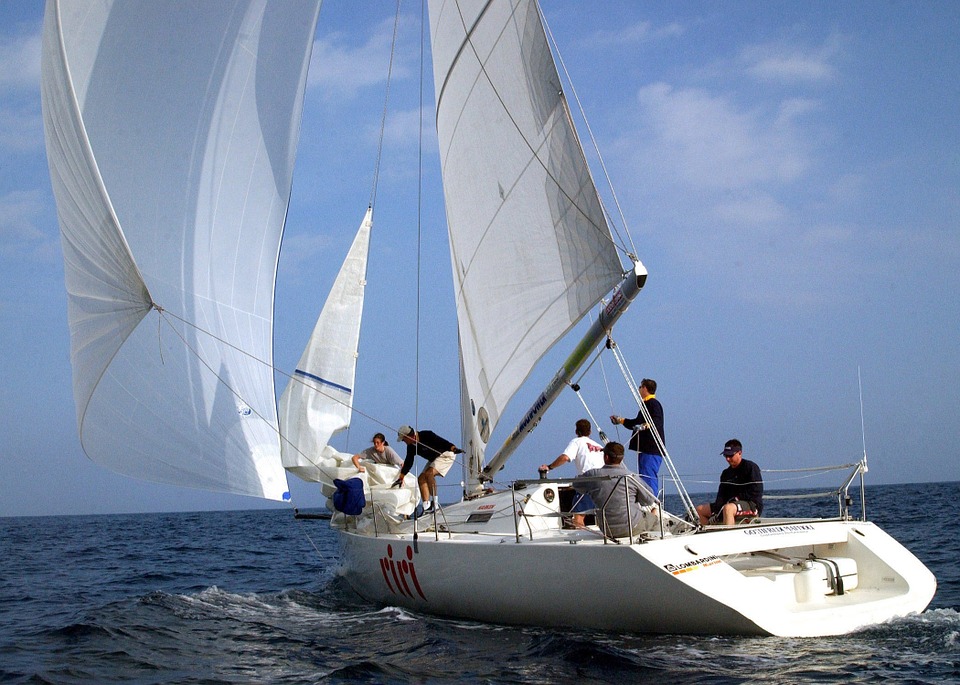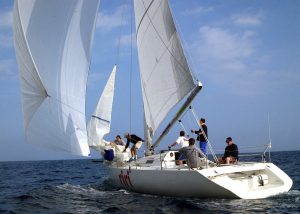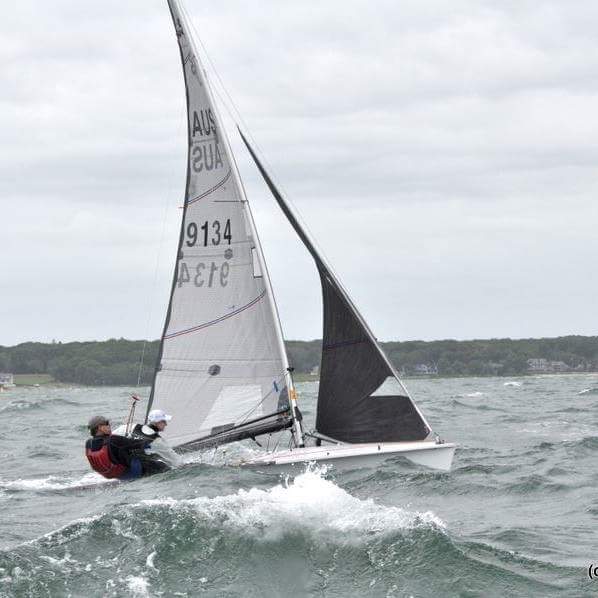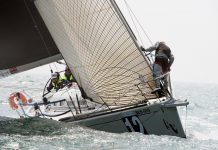

Effective steering off the wind – On reaches and runs it is essential that the helmsman and trimmer communicate and co-ordinate their actions.
As the helmsman, you must also respond to input from the tactician and changing sailing conditions plus the trimmer’s input based on sheet load and boat speed. The problem here is that there may be conflicting voices advising the steerer thus unsettling his concentration.
Since your tactics won’t succeed without good trim, it makes sense that the tactician talks to the trimmer who then gives feedback to the helmsman so the trimmer is the only one who communicates with the helmsman.
Steering on Reaches – Effective Steering Off The Wind
- Light to Moderate Air
On a reach, the fastest way between two points is a straight line and you should plan the reaches with that in mind only varying this based on changes in the sailing conditions or tactics.
In fluctuating wind conditions, work up in the lulls and down in the puffs as necessary to maintain speed, while holding a good average course. The trimmer will indicate when the sheet load is light head up, and when the spinnaker sheet is fully loaded bear off. The amount of course change required depends on wind speed.
When you must head up to pass another boat or defend your position let the trimmer know before making an abrupt change of course, to ensure that the manoeuvre is successful.
2. Heavy air
In heavy air, the helmsman is at the mercy of the trimmers.
The vang, main sheet, and spinnaker sheet must be eased when the boat is overpowered or it will round up and broach but it is fast to carry as much power as you can as long as you can control it.
Carrying some weather helm is OK as long as the rudder doesn’t stall, leading to a round up, this is once again a time when communication between the helmsman and trimmer is essential.
Steering on Runs – Effective Steering Off The Wind
-
Light air (3 to 9 knots)
In light winds, the best sailing angle is about 140° true wind angle (40° above dead downwind). The angle changes very little as the wind speed fluctuates, so don’t head up in the lulls and off in the puffs except for tactical reasons. The fastest way to the next mark is to tack downwind and keeping the apparent wind forward is fast. A word of caution here though, this is boat dependant so it pays to practice to find out what is true for your particular class or boat.
2. Moderate air (10 to 15 knots)
The optimum speed and sailing angle change dramatically with every change in wind speed. For every knot of wind the optimum course shifts five degrees. In ten knots of wind, the optimum angle is 140° true wind angle and fifteen knots a 165° true wind angle is fastest. Do your best to respond to every change in wind speed, driving off with the puffs and heading up in the lulls.
3. Heavy Air (over 15 knots)
Aim for the mark, sail fast and keep control using the waves to surf wherever possible. Use crew weight to balance the helm, avoid sailing dead downwind and trim the spinnaker directly in front of the boat. Crew weight should also be moved aft to promote planing and to avoid the bow burying.
The helmsman should be forceful to keep control but also be mindful that smooth is fast, jerking the helm creates drag and slows you down.






